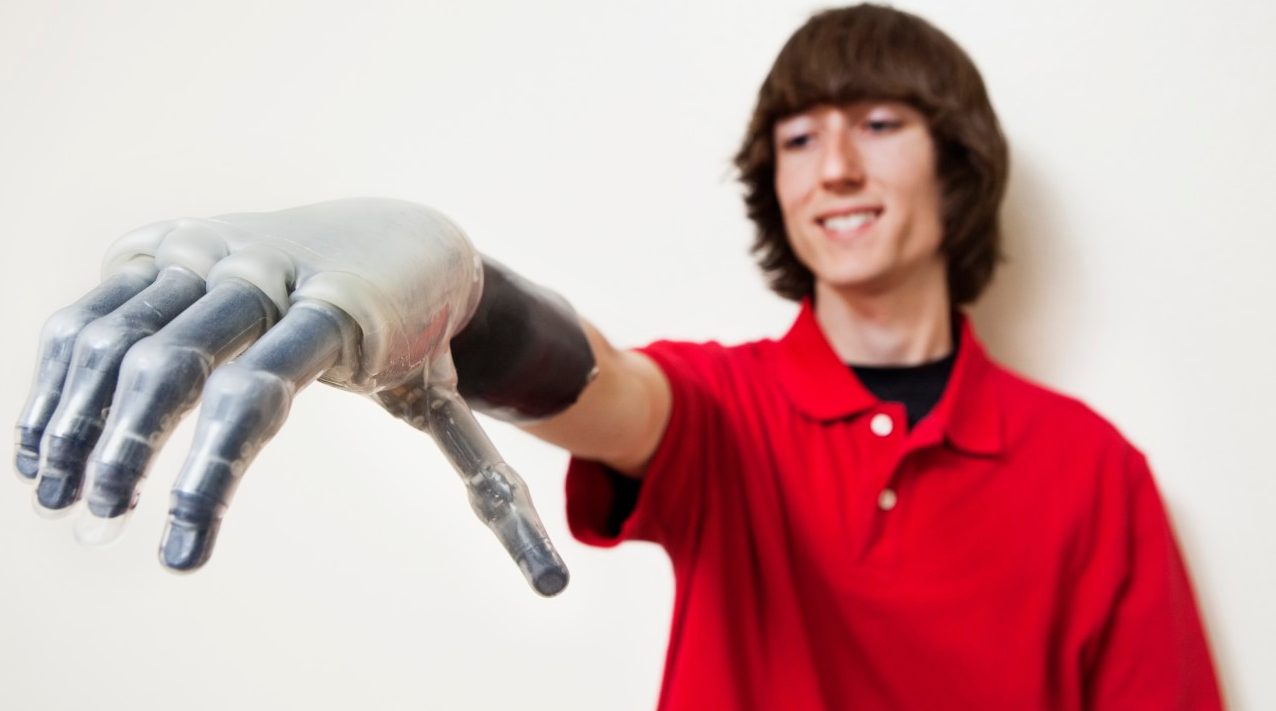Prosthetic Hands Are More Real than Ever

New prosthetic hands look and move much like the real thing — soon they’ll be able to feel, too.
Nearly 2 million Americans, including U.S. military veterans, are living with the loss of a limb. But thanks to modern prosthetics, many amputees have more mobility than ever before possible. Specialized lower limb prosthetics even allow some athletes who have lost legs to pursue running.
Now a new generation of prosthetics is fast moving into even more life-like bionic territory. Researchers have created high tech artificial hands that move and grip much like the biological kind. And scientists are working on ways to further merge biology and technology — including making prosthetic devices that feel, too.
The Defense Advanced Research Projects Agency (DARPA), part of the U.S. Department of Defense, funded the creation of one of the most advanced bionic limbs ever. In fact, it looks and works like something out of a science fiction movie. It’s named, appropriately enough, the Luke Skywalker arm, in honor of the “Star Wars” character who received a prosthetic after losing his hand fighting Darth Vader.
Developed by scientists at the DEKA Research and Development Corporation, the battery-powered prosthetic is the same shape and weight as an adult arm, thanks to technological breakthroughs allowing miniaturization of parts for motors, computer controls, and sensors. The Luke arm was the first prosthetic arm capable of performing multiple, simultaneous movements.
Small electrodes placed near muscles where the prosthesis is attached detect electrical signals when the muscles contract. The electrical signals are sent to a computer processor in the prosthesis that translates them to specific movements. The result is near-natural control of the artificial arm and jointed fingers, allowing amputees fitted with the bionic device to handle objects as delicate as grapes and eggs. The prosthetic can even manipulate power tools, such as a hand drill.
Originally targeted by DARPA for veterans who had upper limb amputations, the Luke arm is now approved by the Food and Drug Administation for other amputees.
A programmable prosthetic hand called the i-limb quantum is another highly advanced artificial limb helping to change lives. Dozens of programmed grip patterns allow people fitted with the hand to do a range of activities requiring different hand strengths — from eating with a fork and shaking hands to grasping a steering wheel and using only one finger to tap a remote control or ring a doorbell.
Produced by the Touch Bionics Company, the i-limb quantum looks much like a robotic version of a human hand, with fingers that bend. It’s externally powered by a battery and movements are controlled, like the Luke arm, by myoelectric signals — meaning the prosthetic uses muscle signals from the wearer’s remaining limb muscles.
Bluetooth technology via a smartphone or desktop app also helps control the bionic hand and lets those wearing it utilize more features than those controlled by muscle triggers alone. For example, up to 24 additional hand grips can be selected with the tap of a button on the app screen.
The i-limb quantum is expensive, with the new prosthetic priced at around $90,000. But users report feeling empowered by the more life-like than ever prosthetic.
“I walk into a room and I used to try to blend in — I don't need to blend in now," said the first U.S. woman to receive the i-limb quantum, Lizbeth Uzcategui, who was born without a right arm below her elbow. "I cannot wait to learn about all the other things I'm going to be capable of doing."
As remarkable as these advanced bionic limbs are, they don’t provide users with a sense of touch. But scientists are working to change that by creating upper limb prosthetics that will feel hot and cold and other sensations.
A team of engineers and researchers at Washington University in St. Louis, headed by Daniel Moran, PhD, is testing a device designed to allow upper limb amputees to feel through their artificial limb via sensory signals sent from a prosthetic hand to nerves in the upper arm and forearm.
Surgeon Paul S. Cederna, MD, of University of Michigan, Ann Arbor, and colleagues are also working on prosthetic devices with the ability to feel and transmit sensations to the brain. They are investigating a technique called a sensory regenerative peripheral nerve interface, which uses a "bioartificial interface" to send signals directly from a prosthetic sensor to a remaining nerve.
Sensory feedback in prosthetics is the wave of the future and will pave the way to more even more natural life-like prosthetics, according to Cederna.
"The ultimate goal is to develop a prosthesis that closely mimics the natural limb, both in its ability to perform complex motor commands and to elicit conscious sensation,” Cederna and his research team stated.
Updated:
April 06, 2020
Reviewed By:
Janet O’Dell, RN